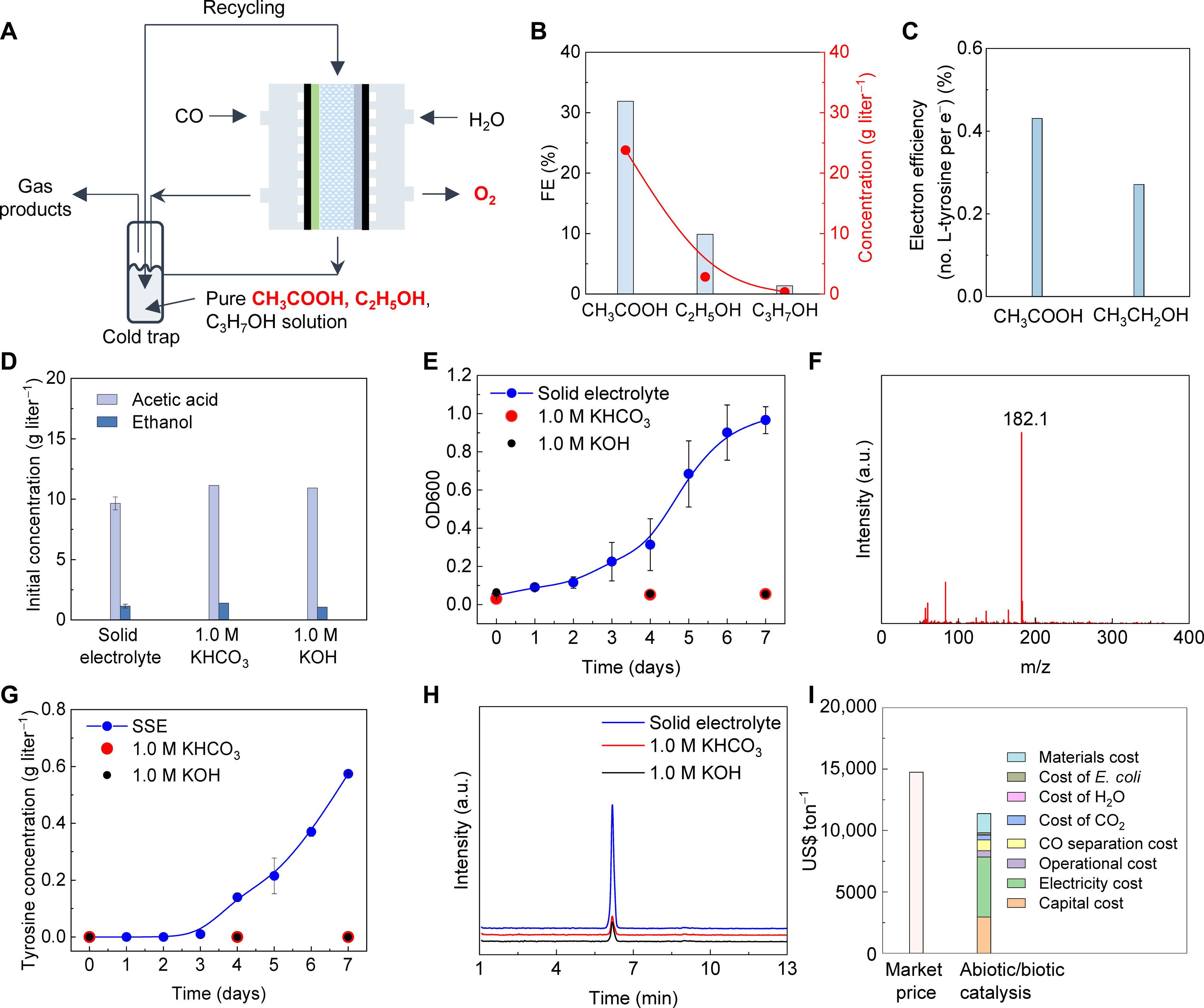混合纽结分子可促进二氧化碳到 l-酪氨酸的转化。
IF 11.7
1区 综合性期刊
Q1 MULTIDISCIPLINARY SCIENCES
引用次数: 0
摘要
将二氧化碳作为主要原料,为二氧化碳的高值化利用提供了潜力,同时也为生产有价值的天然产品(如 l-酪氨酸)开辟了可持续的途径。级联催化是一种前景广阔的方法,但受限于对连接分子纯度的严格要求。我们开发了一种非生物/生物级联催化技术,使用混合纽带分子合成 l-酪氨酸。具体来说,我们首先构建了一个固态反应器,用电化学方法还原二氧化碳,生成乙酸和乙醇的混合物,作为混合纽带分子。随后,我们利用基因工程将乙醇利用途径和酪氨酸生产途径引入大肠杆菌,以促进 l-酪氨酸的生产。乙醇途径与乙酸途径协同作用,提高了酪氨酸的生产率(与没有乙醇利用途径的菌株相比提高了近五倍),并提高了碳效率。我们的研究结果表明,使用混合纽带分子有可能为旨在生产有价值天然产品的级联催化提供更有利的策略。本文章由计算机程序翻译,如有差异,请以英文原文为准。

Blended nexus molecules promote CO2 to l-tyrosine conversion
Using CO2 as the primary feedstock offers the potential for high-value utilization of CO2 while forging sustainable pathways for producing valuable natural products, such as l-tyrosine. Cascade catalysis is a promising approach but limited by stringent purity demands of nexus molecules. We developed an abiotic/biotic cascade catalysis using blended nexus molecules for l-tyrosine synthesis. Specifically, we begin by constructing a solid-state reactor to reduce CO2 electrochemically, yielding a mixture of acetic acid and ethanol, which serves as the blended nexus molecules. Subsequently, we use genetic engineering to introduce an ethanol utilization pathway and a tyrosine producing pathway to Escherichia coli to facilitate l-tyrosine production. The ethanol pathway synergistically cooperated with the acetic acid pathway, boosting l-tyrosine production rate (nearly five times higher compared to the strain without ethanol utilization pathway) and enhancing carbon efficiency. Our findings demonstrate that using blended nexus molecules could potentially offer a more favorable strategy for the cascade catalysis aimed at producing valuable natural products.
求助全文
通过发布文献求助,成功后即可免费获取论文全文。
去求助
来源期刊

Science Advances
综合性期刊-综合性期刊
CiteScore
21.40
自引率
1.50%
发文量
1937
审稿时长
29 weeks
期刊介绍:
Science Advances, an open-access journal by AAAS, publishes impactful research in diverse scientific areas. It aims for fair, fast, and expert peer review, providing freely accessible research to readers. Led by distinguished scientists, the journal supports AAAS's mission by extending Science magazine's capacity to identify and promote significant advances. Evolving digital publishing technologies play a crucial role in advancing AAAS's global mission for science communication and benefitting humankind.
 求助内容:
求助内容: 应助结果提醒方式:
应助结果提醒方式:


